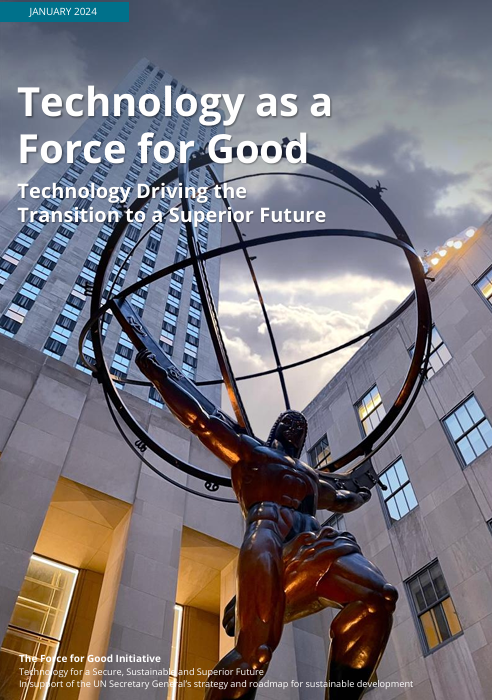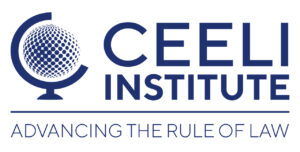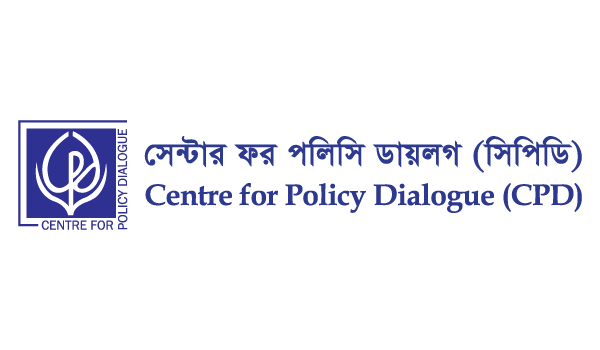Examines technology’s pivotal role in supporting the United Nations Sustainable Development Goals (SDGs). It significantly highlights the profound influence of the tech industry and its leaders in achieving these goals. Furthermore, the report scrutinizes the participation of 100 leading tech companies in Environmental, Social, and Governance (ESG), sustainability, and stakeholder engagement areas. As a result, it helps identify common goals among leaders and their collective ambition to be a force for good. The report also investigates innovative and large-scale initiatives that could create new pathways for the industry by instigating systemic change or accelerating the transition to the Information Age. Technology as a Force for Good 2024 Report
Overview
World Events Threatening Transition Course
Refers to a ‘polycrisis’ of interconnected disruptions diverting attention from crucial transitions like geopolitical shifts, sustainability, energy, and digital technology. It emphasizes the importance of the digital and industrial revolutions triggering the Information Age for global civilizational change. Despite possible challenges, particularly regarding security and sustainability, technology is vital for overcoming these issues and building a better future.
It underlines global progress in education, democracy, and poverty reduction over the past two centuries. However, the current polycrisis could impede this progress. Addressing these challenges and effectively using technology can help overcome these hurdles for a brighter future.
Technology as the critical Change Agent
Undoubtedly, technology is a crucial driver of progress and paves the way for a secure, sustainable, and superior global future. Historically, technology has always been instrumental in advancing humanity. In today’s world, its role in attaining the Sustainable Development Goals (SDGs) and ensuring human security is more important than ever.
Underlines that access to technology is fundamental to the shift towards the Information Age. Specifically, digital technology, particularly AI, is a transformative force with the potential to revolutionize industries and societies. As computing capabilities advance, the impact of AI is expected to grow, thereby necessitating its responsible use to unlock all benefits.
Reflecting on history, technology has been vital in shaping cultural, social, and political revolutions, propelling human progress through innovation. It emphasizes the integral connection between technology and human civilization. Technological innovations stimulate societal transformations, pushing us towards a more prosperous future.
Key Technologies for a Sustainable, Secure, and Superior Future
It underlines the crucial role of 19 core technologies in driving sustainability, security, and overall human prosperity in the future. Indeed, these technologies are viewed as the building blocks for delivering a superior future and are essential for addressing key global challenges.
Furthermore, it highlights the potential of core technologies to improve sustainability and human security in various areas, including food, health, energy, mobility, environment, education, finance, community, and politics. Therefore, these technologies can effectively tackle various problems, fostering a more sustainable and secure world.
Moreover, it emphasizes that core technologies shape our future by instigating changes in various fields, including digital technology, energy, virtualization, materials science, industry, decentralized finance, human empowerment, and space exploration. It brings to light a historic moment where AI, quantum computing, nanotechnology, genetics, and fusion breakthroughs can fundamentally reshape the world.
Technology’s Strategic Role in Geopolitical Power
Delves into the significant impact of technology on global geopolitics and power dynamics. Interestingly, it highlights how the 19 core technologies identified in the report are becoming key fields of competition among countries and power blocs, with control over these technologies seen as a strategic asset for nations.
It highlights that innovation and advanced technology have historically determined a state’s power. The 19 core technologies are now deemed as influential as traditional assets like land, people, and capital in determining a nation’s power in the 21st century. Major power blocs and regional powers are positioning themselves to secure future leadership across these technologies.
Underscores that leveraging these technologies isn’t solely a technological matter but also a strategic and political concern. The influence of these technologies impacts billions and spans political, military, economic, and social sectors. Thus, their deployment and regulation require a coordinated effort from governments, private sectors, and other stakeholders.
Urgent High-Impact Solutions for the UN SDGs
Shines a spotlight on the critical need for immediate action to address the United Nations Sustainable Development Goals (SDGs) and achieve global security and sustainability. While it does acknowledge the importance of the long-term transition to a superior future, it strongly emphasizes the urgent requirement to deliver on the SDGs soon, especially given the looming 2030 target date.
It emphasizes using mature technology solutions to reach the SDGs rather than solely depending on emerging technologies. It identifies high-impact solutions that, if implemented globally and locally adapted, can greatly contribute to meeting the SDGs. These solutions are critical for addressing global challenges and bridging the funding gap for SDG fulfilment.
Stresses the need for collaboration between global tech leaders and key technology host countries for SDG progress. It suggests that those excelling in key technologies will shape a better world future and stresses the importance of prioritizing promising technology solutions to address the SDGs effectively within the timeframe.
Conclusion: Shaping the Future
Encapsulates the transformative potential of technology, driving a civilizational shift towards a more sustainable, secure, and superior future. Importantly, it underscores that technology is a catalyst for change and pivotal in shaping human progress and global development.
It highlights the need to align technological advancements with the Sustainable Development Goals (SDGs) for a fairer society. Effective technology use can foster a future centered on peace, prosperity, and freedom. The technology industry is key in driving this change and promoting global collaboration.
It recognizes global disruptions but stresses the unavoidable future shaped by new tech. It emphasizes the role of core technologies in driving shifts towards a sustainable, prosperous future. It highlights the need for breakthroughs like AI, quantum computing, nanotechnology, genetics, and fusion.




